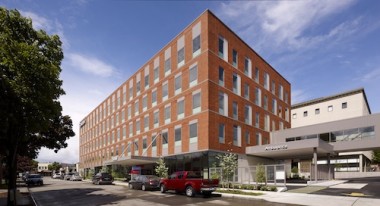The short answer is, No! In addition, A trigger finger is also not a dislocating finger or a knuckle being ‘cracked’. But that doesn’t mean that the a trigger finger is trivial – your trigger finger can be annoying, painful and progressive.
What is a Trigger Finger?
A Trigger finger is a finger that gets stuck in a flexed position, taking some force to extend the finger past a particular position. Usually a click or a pop can be felt at the base of the finger when the finger is extended past the trigger point. Most often, the triggering does not cause pain at first, but progresses over time to cause pain and a stiff finger that often won’t fully extend.
Symptomatic triggering usually occurs in the index, middle or ring finger, but can also occur in the thumb or small finger. Triggering is inflammation in the finger’s flexor tendon and pulley, analagous to having a knot in your shoelaces – with some force the knot can be pulled through the shoe, but in the finger, each time the enlarged tendon tries to go through the inflamed pulley, the inflammation is exacerbated. The official name for the condition is called Stenosing Flexor Tenosynovitis, but is commonly referred to as a trigger finger.
Trigger Fingers and Thumbs in Children
Triggering in children is quite different. Young children can have triggering of their thumb that does not allow any extension of their thumb and is usually best treated surgically. Alternatively, triggering in the rest of the fingers of children is usually a separate anatomic anomaly, but still most often requires surgery for correction.
Who Gets Trigger Fingers?
Adult trigger fingers usually occur in those age 40-60 and does not automatically require treatment. Diabetics and Rheumatoids tend to get triggering at a higher rate, but other causes of triggering include partial tendon laceration and cysts in the tendon sheath. Most triggering, however, occurs in healthy individuals.
What Can Be Done?
Many trigger fingers cause minimal symptoms. When symptoms progress to pain, stiffness and functional difficulties I recommend a steroid injection which quite successful in soften the tendon and pulley due to inflammation. I do not advocate splinting or physical therapy as these are proven to be rarely effective. Injections decrease the symptoms and inflammation in the majority of patients. However, the symptomatic relief remains long lasting in only about half of patients.
When the triggering returns I offer another injection (no sooner than three months after the first injection) or surgical release of the pulley. This surgery is a simple and highly effective surgery that simply involves longitudinal release of the restrictive pulley.
The outpatient surgical release is nearly always successful and permanent, and many of my patients can return to work the next day. Long term relief is the rule, though other fingers occasionally independently may develop triggering.
If you have questions about this condition or you would like a consultation, contact my office at 206-633-8100 or submit a question that I will answer here. I make it my goal to fit you in promptly so as to get you back to full function and trigger free!


 After 40 years of service and the addition of expert surgeons, Orthopedic Specialists of Seattle has outgrown its NW Market Street Ballard location. It has now moved to a new Ballard location at 5350 Tallman Avenue NW, Suite 500. This office is located in the same building as the Swedish Hospital/Ballard emergency room.
After 40 years of service and the addition of expert surgeons, Orthopedic Specialists of Seattle has outgrown its NW Market Street Ballard location. It has now moved to a new Ballard location at 5350 Tallman Avenue NW, Suite 500. This office is located in the same building as the Swedish Hospital/Ballard emergency room.
